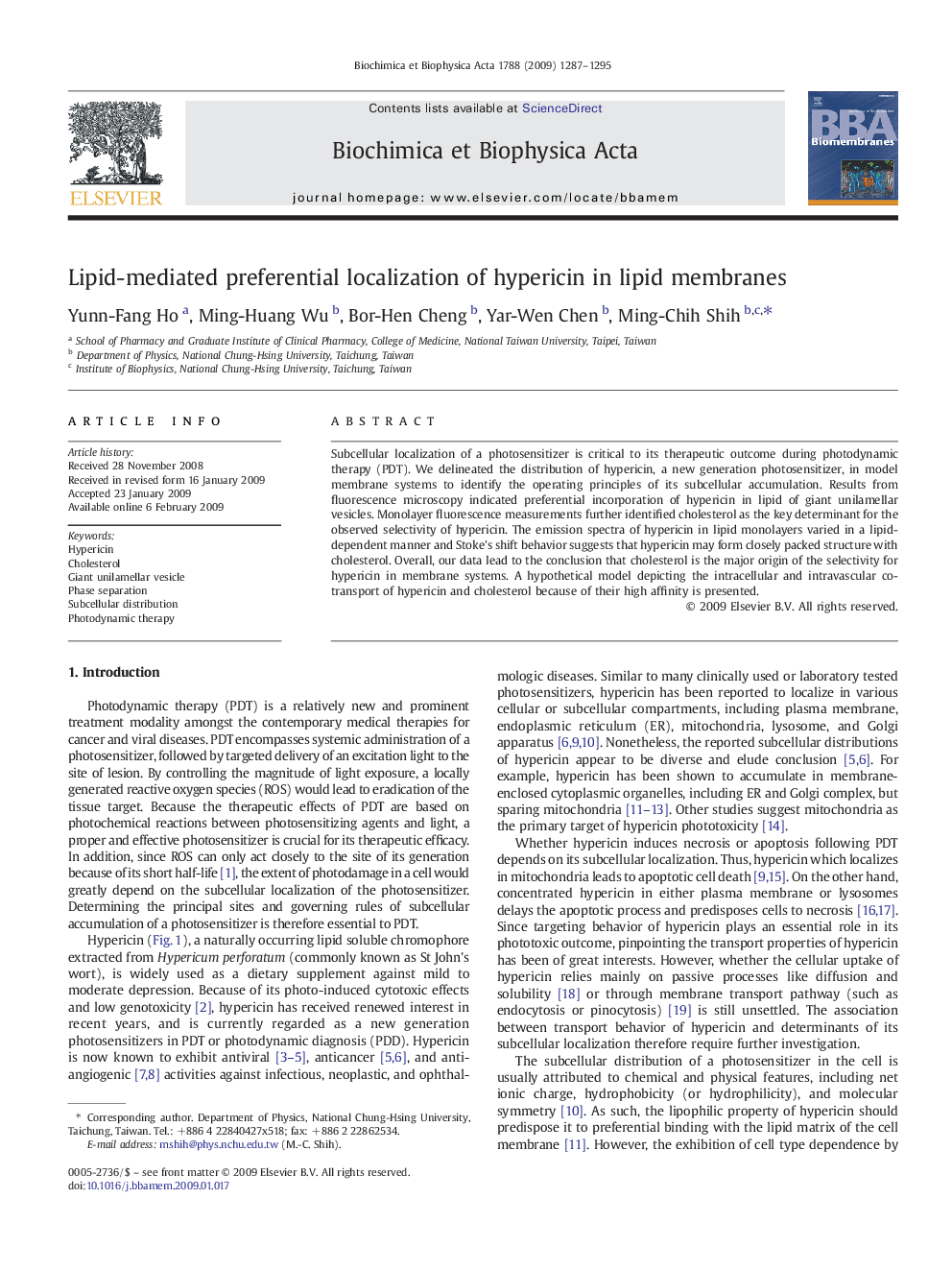| Article ID | Journal | Published Year | Pages | File Type |
|---|---|---|---|---|
| 1945146 | Biochimica et Biophysica Acta (BBA) - Biomembranes | 2009 | 9 Pages |
Subcellular localization of a photosensitizer is critical to its therapeutic outcome during photodynamic therapy (PDT). We delineated the distribution of hypericin, a new generation photosensitizer, in model membrane systems to identify the operating principles of its subcellular accumulation. Results from fluorescence microscopy indicated preferential incorporation of hypericin in lipid of giant unilamellar vesicles. Monolayer fluorescence measurements further identified cholesterol as the key determinant for the observed selectivity of hypericin. The emission spectra of hypericin in lipid monolayers varied in a lipid-dependent manner and Stoke's shift behavior suggests that hypericin may form closely packed structure with cholesterol. Overall, our data lead to the conclusion that cholesterol is the major origin of the selectivity for hypericin in membrane systems. A hypothetical model depicting the intracellular and intravascular co-transport of hypericin and cholesterol because of their high affinity is presented.
